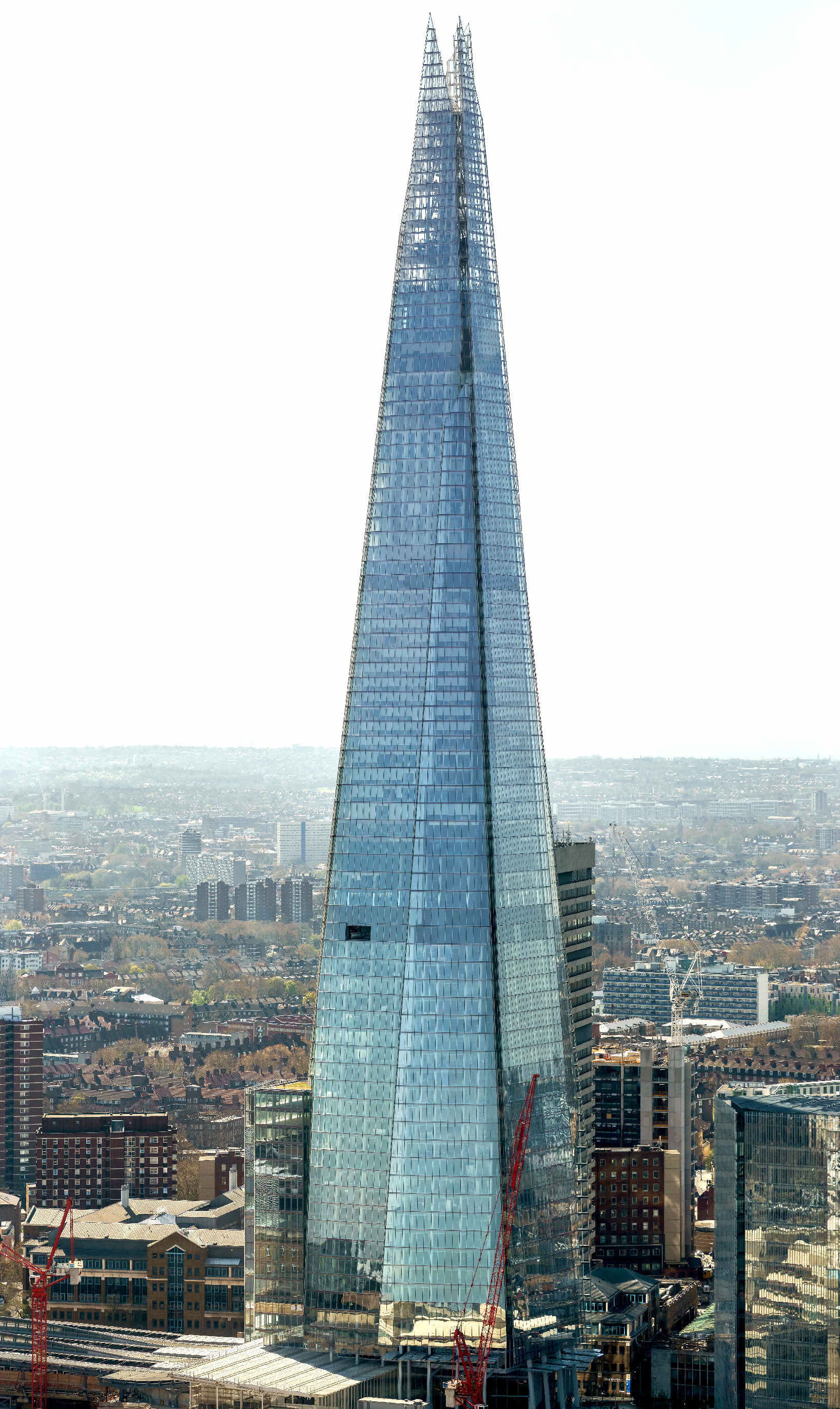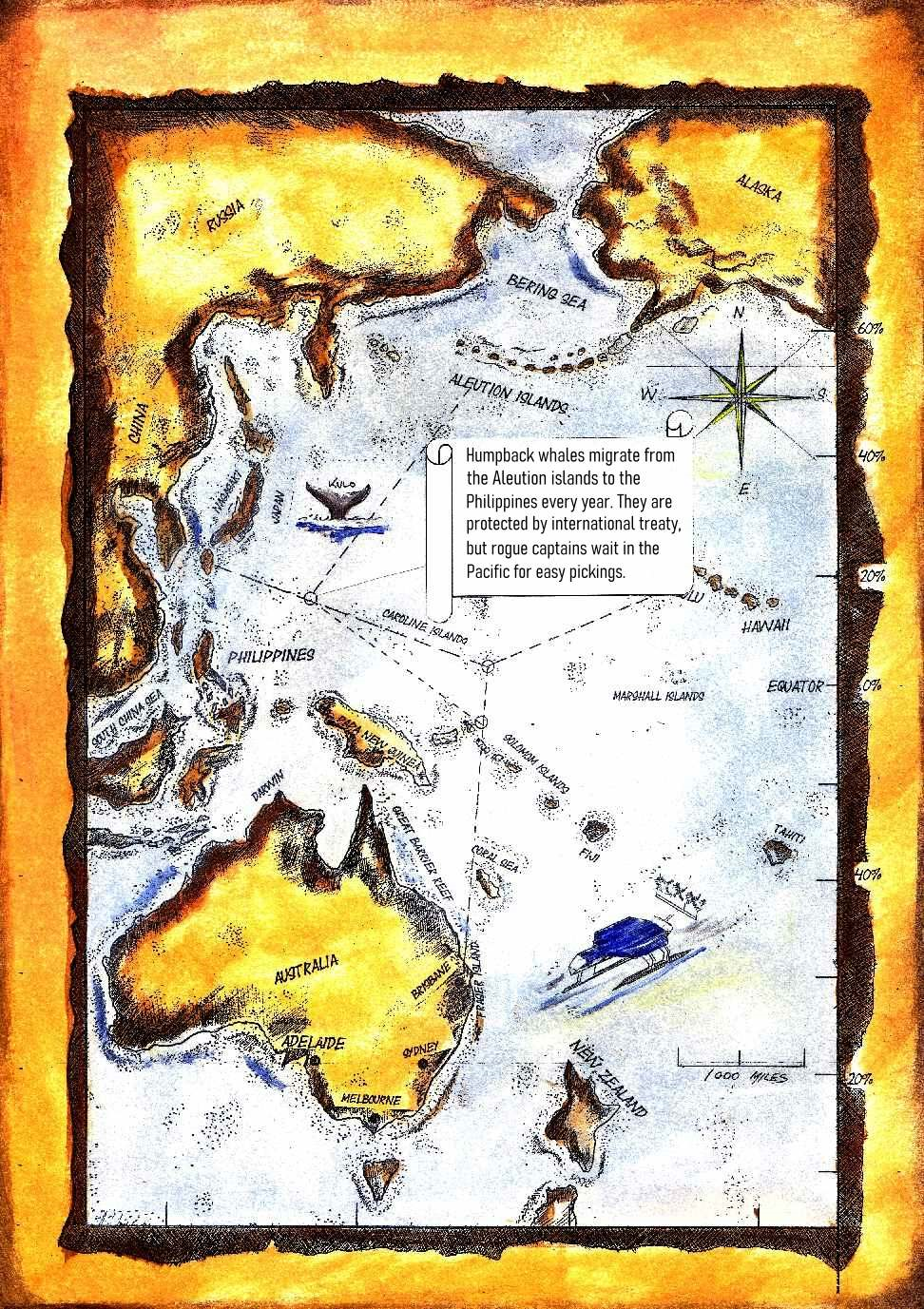
The
adventures of John Storm and the Elizabeth Swann. John Storm is an ocean
adventurer and conservationist. The Elizabeth Swann is a fast solar
powered boat. During a race around the world, news of the sinking of a
pirate whaling ship reaches John Storm and his mate Dan
Hawk. They
decide to abandon the race and try and save the whale. This is a modern Moby
Dick, the twist being that there is a happy ending for everyone
featuring this $Billion
Dollar Whale, even the whalers. Herman
Melville would approve.
PROLOGUE
>>>
In
this chapter John Storm climbs to the top of The
Shard, the tallest building in London, UK, to unfurl a giant banner
protesting against ocean pollution.
THE BRIEF
For this scene, aim for ? pages
(sides) and ? illustrations, suggested as:
1.
....
These
headings are only to guide you - to help you to plan your layout.
CLIMATE
CHANGE >>>

..
The Shard, also referred to as the Shard London Bridge and formerly London Bridge Tower, is a 72-storey mixed use development supertall skyscraper, designed by the Italian architect Renzo Piano, in Southwark, London, that forms part of The Shard Quarter development. Standing 309.6 metres (1,016 feet) high, The Shard is the tallest building in the United Kingdom, and the seventh-tallest building in Europe, the second-tallest outside Russia, only 40cm less than the Varso Tower in Warsaw. It is also the second-tallest free-standing structure in the United Kingdom, after the concrete tower of the Emley Moor transmitting station. The Shard replaced Southwark Towers, a 24-storey office block built on the site in 1975.
The Shard's construction began in March 2009; it was topped out on 30 March 2012 and inaugurated on 5 July 2012. Practical completion was achieved in November 2012. The tower's privately operated observation deck, The View from The Shard, was opened to the public on 1 February 2013. The glass-clad pyramidal tower has 72 habitable floors, with a viewing gallery and open-air observation deck on the 72nd floor, at a height of 244 metres (801 ft). The Shard was developed by Sellar Property Group on behalf of LBQ Ltd and is jointly owned by Sellar Property (5%) and the State of Qatar (95%).
PLANNING
In 1998, London-based entrepreneur Irvine Sellar and his partners decided to redevelop the 1970s-era Southwark Towers following a UK government white paper encouraging the development of tall buildings at major transport hubs. Sellar flew to Berlin in the spring of 2000 to meet the Italian architect Renzo Piano for lunch. According to Sellar, Piano spoke of his contempt for conventional tall buildings during the meal, before flipping over the restaurant's menu and sketching a spire-like sculpture emerging from the River Thames.
In July 2002, the Deputy Prime Minister, John Prescott, ordered a planning inquiry after the development plans for the Shard were opposed by the Commission for Architecture and the Built Environment and several heritage bodies, including the Royal Parks Foundation and English Heritage. The inquiry took place in April and May 2003, and on 19 November 2003, the Office of the Deputy Prime Minister announced that planning consent had been approved. The government stated that:
Mr Prescott would only approve skyscrapers of exceptional design. For a building of this size to be acceptable, the quality of its design is critical. He is satisfied that the proposed tower is of the highest architectural quality.
ARCHITECTURE
Renzo Piano, the project's architect, designed The Shard as a spire-like sculpture emerging from the River Thames. He was inspired by the railway lines next to the site, the London spires depicted by the 18th-century Venetian painter Canaletto, and the masts of sailing ships. Piano's design met criticism from English Heritage, who claimed the building would be "a shard of glass through the heart of historic London", giving the building its name, The Shard. Piano considered the slender, spire-like form of the tower a positive addition to the London skyline, recalling the church steeples featured in historic engravings of the city, and believed that its presence would be far more delicate than opponents of the project alleged. He proposed a sophisticated use of glazing, with expressive façades of angled glass panes intended to reflect sunlight and the sky above, so that the appearance of the building will change according to the weather and seasons. The building features 11,000 panes of glass, with a total surface area of 602,779 square feet (56,000.0 m2) equivalent to the area of almost eight Wembley football pitches.
The Shard was designed with energy efficiency in mind. It is fitted with a combined heat and power (CHP) plant, operating on natural gas from the National Grid. Fuel is efficiently converted to electricity, and heat is recovered from the engine to provide hot water for the building.
Following the destruction of New York's World Trade Center (WTC) in the terror attacks of 11 September 2001, architects and structural engineers worldwide began re-evaluating the design of tall structures. The Shard's early conceptual designs were among the first in the UK to be amended following the publication of the US National Institute of Standards and Technology (NIST) report into the collapse of the WTC. The building is designed to maintain its stability under very onerous conditions, with its post-tensioned concrete and composite floors, load-bearing pillars, and tapering shape giving it a sway tolerance of 400 millimetres (16 in).
In 2014, The Shard claimed first place at the Emporis Skyscraper Awards, recognising buildings over 100 m (328 ft) completed in the previous twelve months. The Emporis judges hailed the building as "a skyscraper that is recognized immediately and which is already considered London's new emblem".
CONSTRUCTION
For the construction of the skyscraper some path-breaking engineering methods were used, such as top-down construction, where foundations are dug while the core is built up – this was a first for the UK. In February 2009, a mobile crane and a small piling rig arrived on site. In early March 2009, the crane began putting steel beams into the ground, as part of preparations for the core of the building. Full construction began on 16 March 2009. Demolition work on New London Bridge House started in May 2009, as part of the concurrent London Bridge Place project. The first steelwork went into The Shard's piles on 28 April. Five cranes were used to build The Shard, with four of them 'jumping' with the tower as it rose. Crane 1 was erected in September 2009 and Crane 2 was erected at the beginning of October. By 20 October 2009, steel beams began appearing on site, with concrete being poured at the northern part of the site, ready for Crane 3.
By March 2010, the concrete core was rising steadily at about 3 m (10 ft) a day. After a pause in March–April 2010, it continued rising, reaching the 33rd floor in mid-June, almost level with the top of Guy's Hospital, which stands at 143 m (469 ft). On 27 July 2010, the core stopped rising, having reached the 38th floor, and was reconfigured for further construction. By mid-November 2010, the core had reached the 68th floor, with the tower's steel reaching the 40th floor and glass cladding enveloping a third of the building. In late November, the core's height exceeded 235 m (771 ft), ending One Canada Square's 18-year reign as Britain's tallest building.
The Shard's concrete core topped out at the 72nd floor in early 2011, standing at 244 m (801 ft). The early part of January 2011 saw the installation of hydraulic screens, which were used to form the concrete floors of the hotel and apartment section of the tower, and rose with the floors up to the 69th floor. On 25 January 2011, the concrete pumps began pouring the first concrete floor at the 41st floor. By the end of February 2011, concrete flooring had risen to the 46th floor, with a new floor being poured on average every week. The cladding of the structure also progressed, mainly on the tower's "backpack". During this phase of construction, a fox was discovered living at the top of the unfinished skyscraper. The fox, named Romeo by staff, is thought to have entered the building through the central stairwell. It survived by eating scraps of food left by builders working on the incomplete structure. The fox was captured and taken to Riverside Animal Centre in Wallington.
August 2011 saw steady progress in construction, with cladding enveloping more than half the building's exterior. Pouring of the concrete floors reached the 67th floor, and progression on the tower's cladding reached the 58th floor. By mid-August, the core box had been removed. By 19 September 2011, the tower's steel was approaching the height of the completed core, reaching almost 244 m (801 ft). On 24 September, a final crane – at the time, the tallest ever built in Britain – was erected to install the skyscraper's upper spire. The spire was pre-fabricated and pre-assembled based upon 3D models, and underwent a "test run" in Yorkshire before being lifted onto the building itself. By late December 2011, the Shard had become the tallest building in the European Union, superseding the Commerzbank Tower in Frankfurt, Germany.
The Shard's steel structure was topped out on 30 March 2012, when its 66-metre (217 ft), 500-tonne spire was winched into place. The steel structure thus reached a height of 308.7 m (1,013 ft). The final 516 panes of glass were added shortly after, topping the tower out at its full height of 309.6 m (1,016 ft).
The Shard was inaugurated on 5 July 2012 by the Prime Minister of Qatar, Hamad bin Jassim bin Jaber Al Thani, in a ceremony attended by Prince Andrew, Duke of York. Practical completion of the building was achieved in November 2012.
PROTESTS
Greenpeace activists scaled the Shard in London on July 11, 2013, to protest against oil and gas drilling in the Arctic by Shell. The group of six female activists reached the top of the Shard in central London at around 7 on Thursday night after 15 hours of climbing. After reaching the summit of the 72-storey building, two of the campaigners unfurled a 32 foot by 32 foot blue flag with “Save the Arctic” written in white across it. The campaign was largely about oil company Shell’s activities in the Arctic region. The feed said: “This building – modelled on a shard of ice – sits slap bang in the middle of Shell’s three London headquarters. They don’t want us talking about their plan to drill in the Arctic. We’re here to shout about it from the rooftops.”

REFERENCE
& RESEARCH
https://

Please use our
A-Z INDEX to
navigate this site



